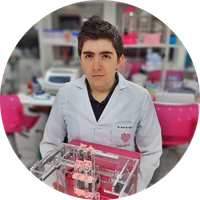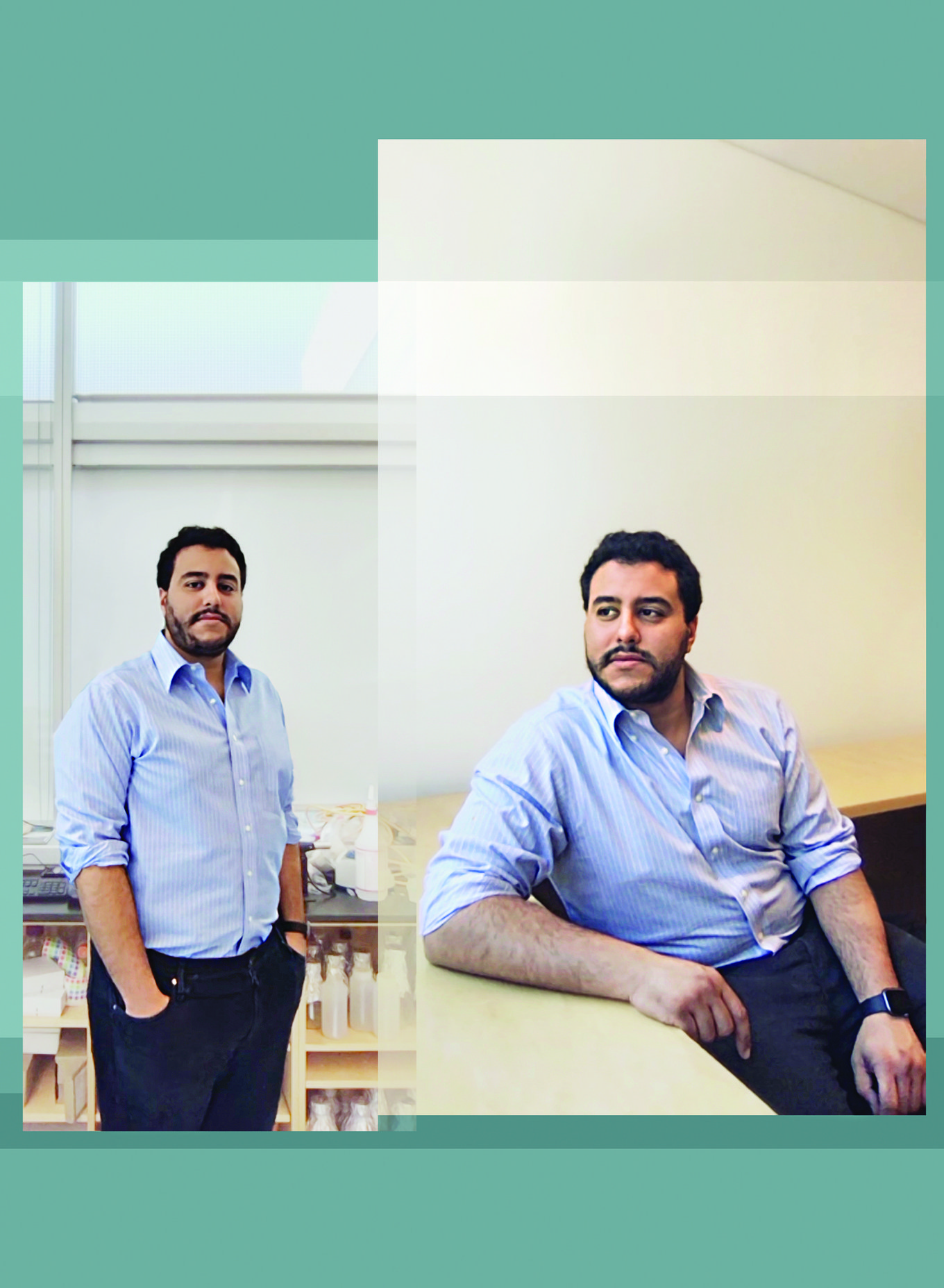CRISPR has been called the discovery of the century for its potential to change biomedical research and treatment of genetic diseases. But it was Omar Abudayyeh who helped turn the gene-editing tool into a diagnostic test, one that might help slow down the covid-19 pandemic.
Seizing on the precise gene-finding mechanism, in 2016 Abudayyeh, along with Jonathan Gootenberg and other colleagues at MIT, forged CRISPR into a tool to spot cancer mutations, bacteria, and mosquito-borne viruses like Zika. Soon, there was a spinout startup company called Sherlock Biosciences, $49 million in funding, and newspaper stories about CRISPR’s “new capabilities.”
Then came covid-19. Genetic tests to spot the pathogen were in desperately short supply in the US, with the workhorse technology, PCR, floundering. By early May, three months into the outbreak, around 2% of Americans had been tested for covid-19. Some economists say the country needs to test that many people every day to reopen with confidence.
That’s why, since January, Abudayyeh and his colleagues have been trying to forge CRISPR into an at-home test for the virus. The basic chemistry is simple enough, they think, to create an easy-to-use test that you could give yourself before heading to work, or maybe take at an airport gate before catching a flight.
If they succeed, virus testing could happen anywhere, anytime, and the gene-editing revolution would reach directly into people’s homes and lives for the first time.
Here’s how it works
The CRISPR revolution began with discoveries, in the early 2000s, that bacteria had evolved a way to chop up marauding phage viruses. CRISPR, whose name is an acronym for this natural biological invention, can spot unique sequences of DNA letters and cleave them with a cutting enzyme, Cas9. The tool, it turned out, was easy to use and worked in many species. Biotech startups began racing to treat genetic disease in humans. Gene-edited human twins were even born in China.
During what he calls the “Cas9 craze,” Abudayyeh was drafted into a less visible avenue of research: the effort to discover and characterize novel CRISPR enzymes.
Soon the list was growing, and Abudayyeh and colleagues were demonstrating what the new editors could do. There would be Cpf1, also known as Cas12a, and then Cas12b. But one called Cas13, discovered literally under our noses (it’s part of a human oral bacterium called Leptotrichia shahii), was special. Instead of cutting DNA, the enzyme could instead target RNA, the genetic messenger molecule inside of cells, which is also the primary genetic material of many viruses, including the coronavirus.
It was a totally new way to edit. What hadn’t changed was Abudayyeh’s close and ongoing collaboration with fellow gene editor Jonathan Gootenberg. The pair first met as MIT undergrads and then worked together in the busy lab of CRISPR pioneer Feng Zhang (who made our list of 35 innovators in 2013) at the Broad Institute. They’ve written 28 papers together, and in 2017 they were hired to establish a joint lab at the MIT McGovern Institute, which they christened the “AbuGoot Lab.”
“We joke that it’s a scientific bromance that just keeps on going,” says Abudayyeh, who reckons he’s the more practical of the two, while Gootenberg is more mathematical. “Our brains haven’t quite merged, but it’s close.”
And they needed two heads to understand the new RNA editor, Cas13. The enzyme turned out to have a bizarre “collateral effect.” Not only did it cut specific RNA strands, but once it got going, it would furiously chop up and degrade any RNA in its path. “The mechanism was insane and very confusing at first,” says Abudayyeh. “We think it’s part of a cell-suicide mechanism”—a natural self-destruct device in bacteria attacked by a virus. “When it activates, it shuts down everything in the cell.”
The indiscriminate cutting, though, meant Cas13 wasn’t a great editor on its own. “It was kind of disappointing, but we came from an engineering background, so we asked what it is good for,” says Abudayyeh. Maybe they could blow up RNA in a cancer cell, bringing it to a halt?
The idea that the collateral damage could turn CRISPR into a lab diagnostic was first floated by scientists from the rival laboratory of Jennifer Doudna at the University of California, Berkeley. There a team proposed that indiscriminate cutting could serve as a detection mechanism. In short, if the enzyme found a match in a test tube—a piece of RNA belonging to a virus, say—the collateral cutting could be used to sever special RNA that, when broken, would set off a visible fluorescent signal.
Great idea, but on its own, Cas13 wasn’t sensitive enough to create a test. So Abudayyeh and Gootenberg got help from MIT professor Jim Collins, who showed them how to add a preamplification step, or a way to copy and multiply the RNA before testing for a match. By 2017, the group was showing off a complete CRISPR diagnostic system called Sherlock that could locate unique mutations that cause cancer or flag the presence of bacteria, or even the Zika virus. And it was highly accurate. Imagine being able to pick out one person’s face from the population of 100 million Earths. That’s the equivalent of what Sherlock could do in sorting through RNA.
Sherlock soon had competition from the Berkeley team, which started its own CRISPR diagnostics company, Mammoth Biosciences. One result: a tangle of competing diagnostic patents that is reminiscent of the bruising, costly fight between the two institutions over the original CRISPR inventions. Abudayyeh shrugs: “It’s more exciting when you have more than one group working on it. And it’s better for CRISPR diagnostics that it’s not just one company trying to peddle a technology.”
He’s right: reaching the market is the hard part. That’s because diagnostic testing is a business of giant companies, big machines, and centralized labs. It can take a hundred million dollars to develop a test that sells for $45. “Not for the faint of heart” is how venture capitalist Bruce Booth once described the business. By late 2019, Sherlock, a company Abudayyeh cofounded, was still edging the CRISPR-based tests toward the market.
But then the pandemic exploded out of China and changed everything. When the shortage of tests in the US became clear, the Food and Drug Administration started giving emergency approvals to makers of dozens of tests, allowing them into the market immediately. In May, Sherlock Biosciences won US authorization to perform a version of the CRISPR test that had to be done in a lab, although at press time no one had yet used it on a patient.
A home test
Still, it wasn’t easy enough for someone without training to use. Back on MIT’s campus, Abudayyeh, Gootenberg, and Zhang set out to simplify the technology. They reasoned that if they could eliminate some of the fluid mixing steps, the test could be used in workplaces, in pharmacies, or even at home. It didn’t need repeated heating and cooling, as PCR does. And the readout was easy to understand: just colored bars on a paper strip, like a pregnancy test. “Our vision is really testing that can be done at home,” says Abudayyeh. “So how can we push this so it’s fewer steps, simple, and cheap?”
Right now, so-called point-of-care diagnostic tests do exist, but they need to be run on machines that cost thousands of dollars. One device, ID NOW, which is sold by Abbott, returns coronavirus results in 15 minutes and is used by the White House to screen visitors meeting with President Donald Trump. But the machine that processes the test costs thousands to buy. Abudayyeh says CRISPR home tests might cost $6 each and only use simple equipment.
By May, the researchers had created a simplified version and launched a website to share the new chemistry, which they showed could spot the coronavirus in swabs from patients. They are working with a design firm to create a prototype of a plastic cartridge to hold and mix the test ingredients. So has Abudayyeh tested himself? He hasn’t. “It’s tempting to spit in the tube,” he says. “But it’s also a scary thing to do.”
Pretty soon, though, people around the world may be having such “Do I or don’t I have it?” moments regularly, or at least that’s the hope.
The work is “not final,” Abudayyeh says. “Final is a simple device you can spit in. But this is the version of the chemistry that would work for the home. I think our goal right now is to have it ready for the fall. For when the second wave comes.”




